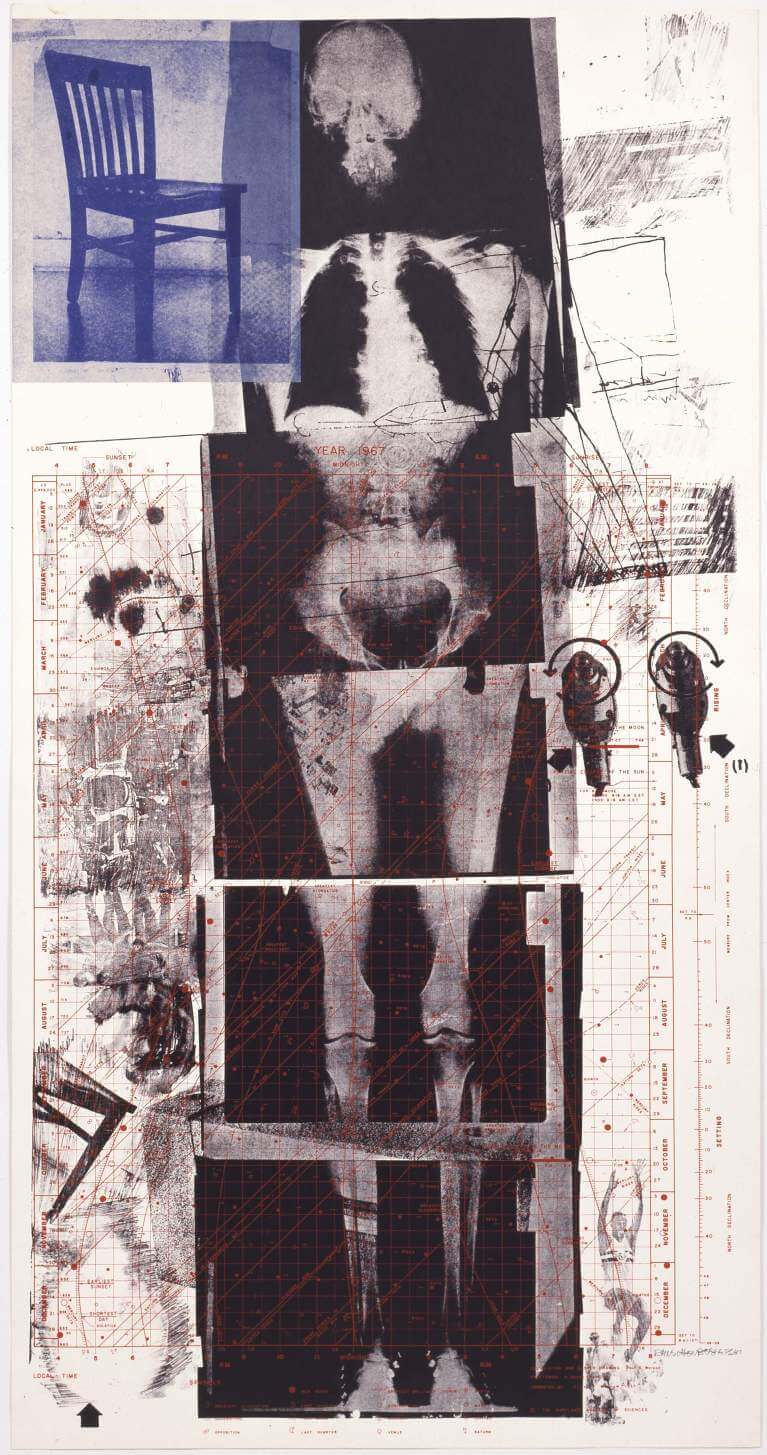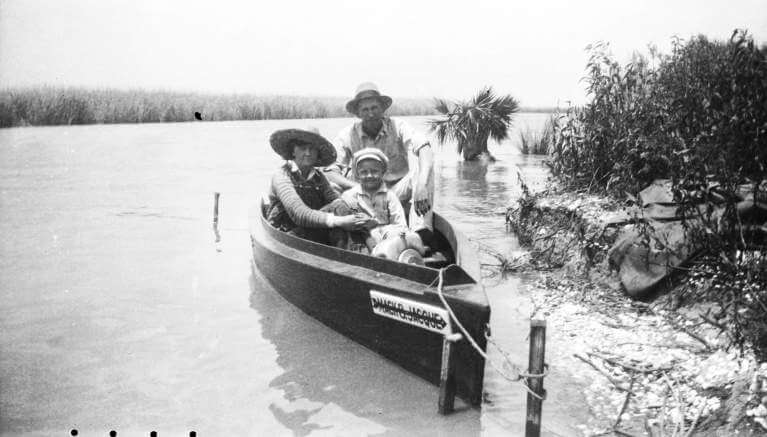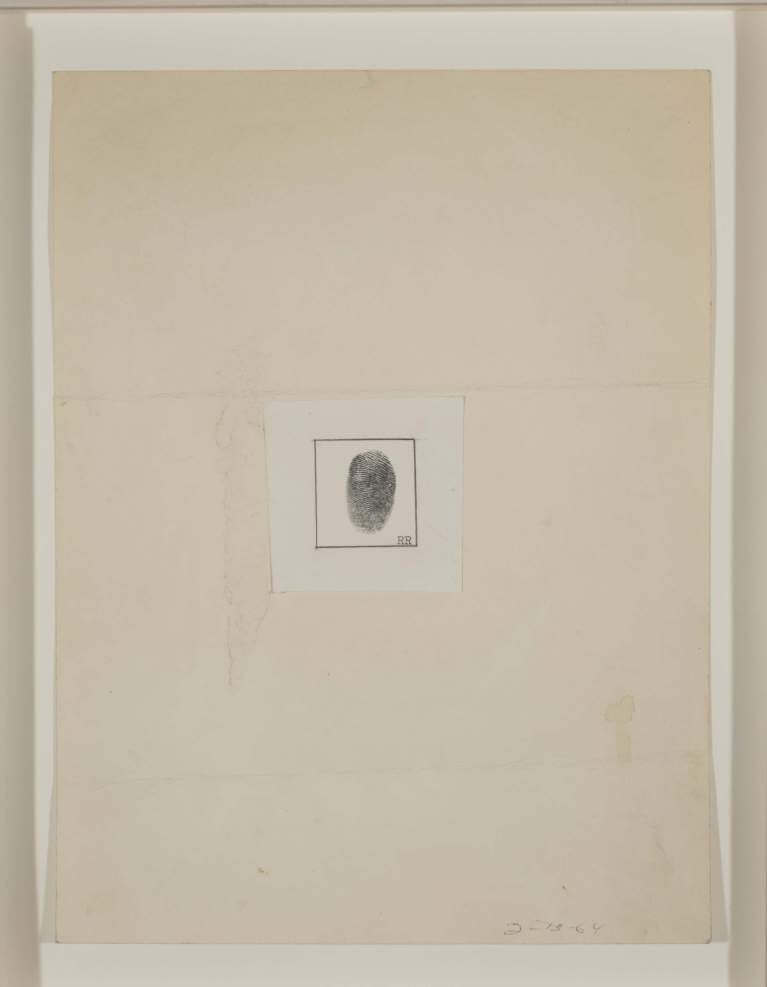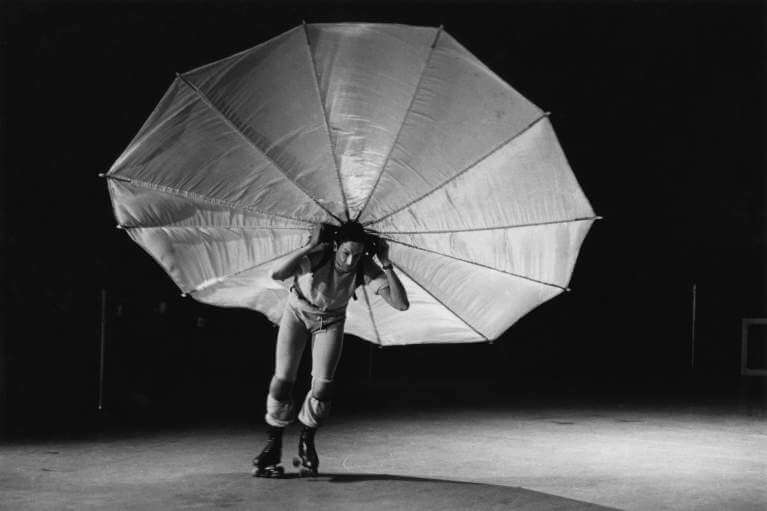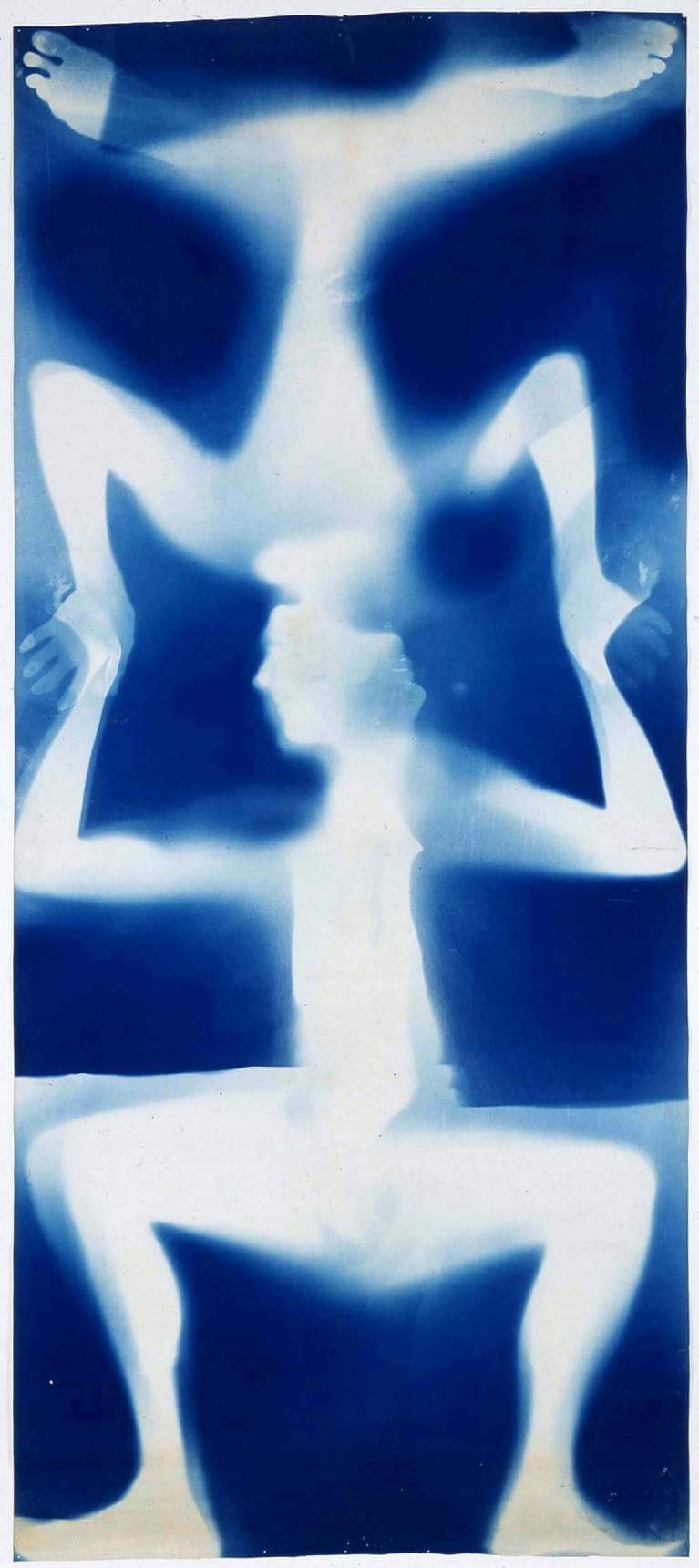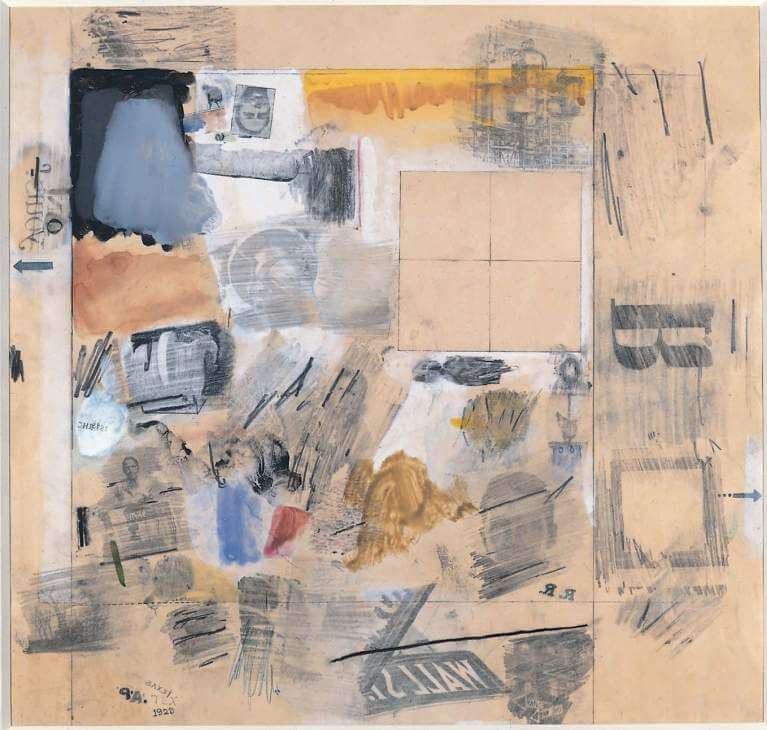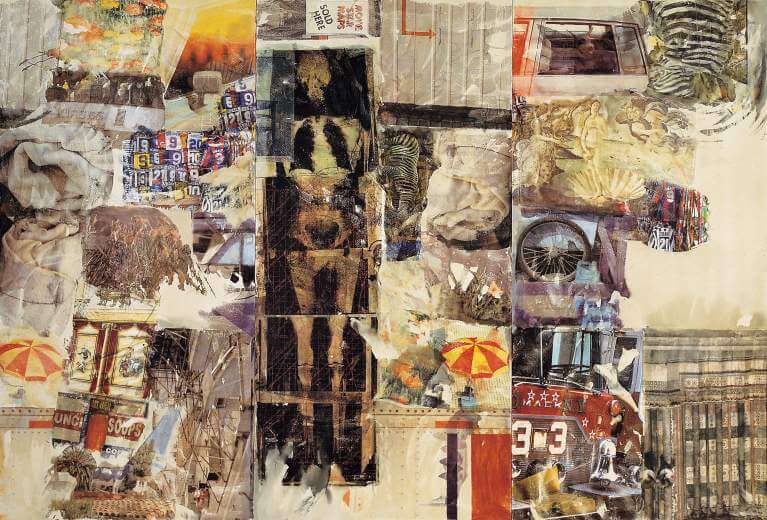
Autobiography, 1968
Autobiography
Rauschenberg’s monumental print Autobiography (1968) is a summation work that brings together the life and work of the then forty-three-year-old artist. Printed on three sheets of paper in an edition of 2,000, under the sponsorship of Marion Javits, wife of the U.S. Senator Jacob Javits, Autobiography is the first fine art print made on a billboard press. In each section, the artist’s personal history is woven together through a montage of indexical images—direct traces of the artist—such as photographs and X-rays, combined with references to places of personal importance and “found” imagery, including an umbrella and wheel, which are among Rauschenberg’s recurrent motifs. Upon its completion in January 1968, the sixteen-and-a-half-foot-tall, color, offset lithograph was immediately exhibited at the Whitney Museum of American Art, New York.
Booster, 1967
The top tier of Autobiography displays a full-scale X-ray of Rauschenberg that was taken in 1967 and used in the earlier print, Booster (1967). The X-ray was taken when Rauschenberg was in California to work at Gemini on the print project; as no six foot X-ray machine was available, the image is composed of six contiguous, one foot X-rays. In Booster, the skeletal image is combined with a chair (another of Rauschenberg’s signature images), whereas in Autobiography, the X-ray has been superimposed over the artist’s astrological chart and combined with the familiar images of the umbrella and wheel.
Rauschenberg boating with his parents Ernest and Dora Rauschenberg on the bayou near Port Arthur, Texas, fall ca. 1927
The focal point of the middle section of Autobiography is a photograph of Rauschenberg as a two-year-old boy, boating with his parents, Ernest and Dora Rauschenberg, on the bayou near their home in Port Arthur, Texas. The family snapshot is encircled by a text that summarizes major events in the artist’s life and career. Superimposed over the image (and again in the bottom panel of Autobiography) is a volumetric cube that appears throughout Rauschenberg’s series of silkscreen paintings made between 1962 and 1964; the box makes reference to Rauschenberg’s longstanding embrace of illusionism and representation at a time when the art world favored abstraction and flatness of the picture plane.
Self-Portait [for The New Yorker profile], 1964
The spiraling biographical text in the central section of Autobiography (reprinted more legibly in Andrew Forge’s 1969 monograph on the artist) is often compared to a fingerprint, an entirely individualized personal trace. The fingerprint also serves as a self-portrait in the illustration Rauschenberg created for his New Yorker profile by Calvin Tomkins, “Moving Out,” published February 29, 1964. In addition to the inked thumbprint, The New Yorker self-portrait includes a stencil of the artist’s initials, “RR.”
Rauschenberg performing his piece Pelican (1963), First New York Theater Rally, former CBS studio, Broadway and Eighty-first Street, New York, May 1965. Photo: Peter Moore © Barbara Moore/Licensed by VAGA, NY. Courtesy of Paula Cooper Gallery, New York
On the bottom panel of Autobiography is a still of the artist in his performance piece Pelican (1963), the first work he choreographed. In the print, Rauschenberg appears to be propelling himself forward over the surface of a box and into the viewer’s space. With parachute strapped to his back, critic Erica Abeel described Rauschenberg as a “human combine.” Where the Combines had brought painting “off the wall,” in the words of art critic Calvin Tomkins, Pelican and his other theater works brought Rauschenberg’s art into motion and into the arena of life. Also included in the bottom panel of Autobiography are silkscreened images that refer to places of personal significance to Rauschenberg: a navigational chart of the Gulf of Mexico near his hometown of Port Arthur, Texas, and a photograph of the water towers as viewed from his studio in New York.
Robert Rauschenberg and Susan Weil Untitled [double Rauschenberg], ca. 1950
Already in his early work, Rauschenberg incorporated direct traces of his body for autobiographical purposes. His monoprint, Untitled [double Rauschenberg], made ca. 1950, with his then-wife Susan Weil, was produced when the artist was also experimenting with photography. The blueprints are made by exposing photosensitive paper to light, but unlike a photograph, the trace of the subject on the paper is silhouetted in actual size. In other words, as with the X-ray in Autobiography, there is a one-to-one relationship to the subject.
Autobiography, 1960
Rauschenberg frequently used a transfer drawing technique to create self-portraits. Autobiography, a drawing from 1960, includes transferred images of the artist’s face and reversed lettering, including his initial “R” and the initials of his hometown, “P.A.”(Port Arthur), combined with the word “Texas” and fine art reproductions. Rauschenberg’s four-panel White Painting (1951) and one of his most famous Combines, Monogram (1955–59), is coupled with reproductions of Leonardo da Vinci’s Mona Lisa. The concept of showing his own works within another work (reminiscent of Marcel Duchamp’s Boîte-en-valise [1935–41]) is something Rauschenberg had already done in Self-Made Retrospective, a no-longer-extant Combine from 1954 that comprised six small works made by the artist between 1951 and 1954.
Mirthday Man [Anagram (A Pun)], 1997
Like the Autobiography lithograph created nearly thirty years earlier, Mirthday Man (1997) is a culminating work. It was also developed on a large scale, 10 x 15 feet, and on three panels. Made on the occasion of the artist’s seventy-second birthday and following the opening of his full-career retrospective at the Guggenheim Museum in New York, Mirthday Man is a work from the painting series Anagram (A Pun) (1997–2002). As in Autobiography, the artist includes the full-body X-ray from 1967, omnipresent Rauschenberg motifs (wheels, umbrellas, and fine art reproductions), and his photos of New York and from a trip to Ephesos, Turkey, in 1996.

